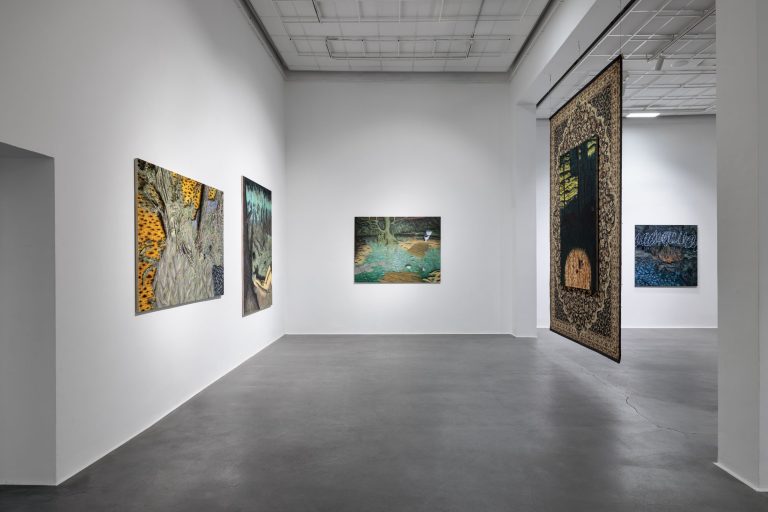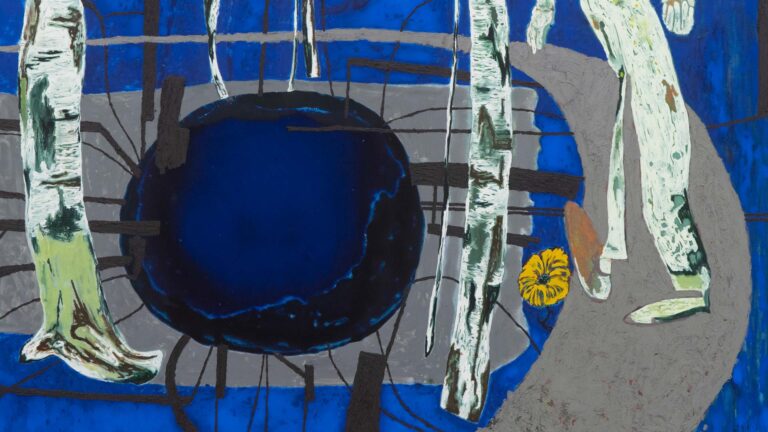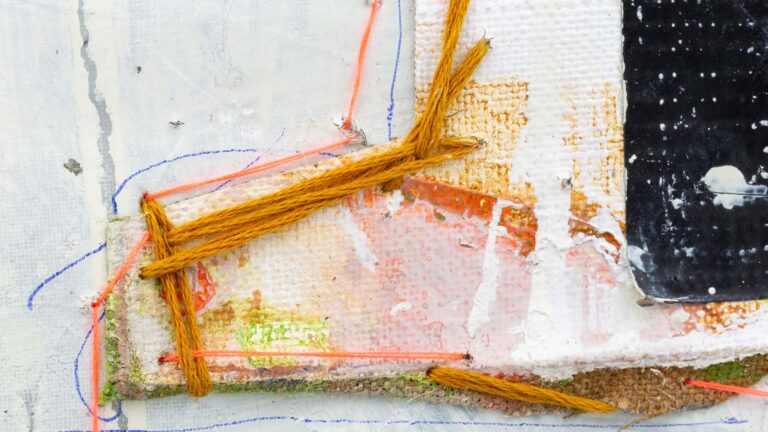What color is black bile? The second part of the name indicates not the color, but the type of secretion. We are not sure exactly what fluid was involved. Perhaps it was the blood that flows from the spleen. It is darker than blood from other areas. It flows to the liver, so this is most likely where the association with bile came from. This particular fluid became the basis for the mythology of melancholy and decadence. Its excess was said to be responsible for the temper from under the sign of Saturn.
Jakub Czyszczoń, calling his exhibition Spleen, reveals precisely this primordial baggage of meanings, which derives directly from the function and structure of the spleen. Among the concepts associated with the melancholic temperament are also Earth and Autumn. These two concepts seem to be particularly close to the set of works that make up Spleen. This is evidenced by their coloration, which is based on cinnabar. There are two sources of this dye. One of them is the stone of the same name, which owes its color to mercury sulfide. The second, primary method of obtaining was the breeding of maggots – insects from which the red dye was produced. Their Latin name is Kermes vermilio, which gave the English vermilion. And so we are back to the topic of bodily fluids.
One of the phases of imbalance between substances related to humor was apóstasis – that is, the accumulation of excess matter in one place and its separation from its surroundings. Etymologically, it is also related to apostasy. It’s a leave, but also a bulge. Several of the new works introduce just such a tension between surface and depth. Fragments of branches are placed under the canvas, and the subject becomes the rippling that occurs on the surface. This is not a new theme for Czyszczoń. Focusing on what is covering has always been at the center of his interests. What we have here is a radicalization of this tendency. It also manifests itself in other places in more subtle ways. There are recurring fragments of clothing that become elements of the composition. They emphasize with their flatness the cartographic qualities of the composition. What a spatial object usually reveals becomes a two-dimensional map of bodily territories. But it is there that the symptoms of what is separating beneath the surface are showing up, which will perhaps lead to bulging and apostasy – something that was originally black but has been drawn with yellow dye, or vice versa.
Text accompanying the exhibition Spleen by Daniel Muzyczuk

































